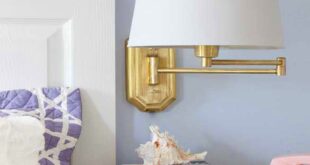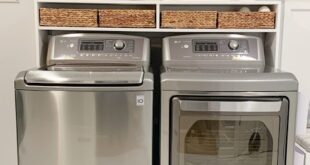

This post is part of the series, Budget Decorating: The Forgotten Secrets. In this post I am going to share the easy way to remember how to hang art, pictures or decorative objects on walls so they look in perfect harmony for the space.
When decorating there are elements that come into play that we tend to forget about. These elements when added to any room in a home will make it feel more cohesive.
As a blogger who writes about budget decorating and DIY ideas, I receive quite a lot of questions from readers asking for ideas on how they can make a room in their home look better, bigger or brighter.
They ask how to make a piece of furniture look updated, more colorful. Other questions are more specific to the reader’s home and style, but all the questions I receive have one goal in mind.
In a nutshell… they are looking for ways to make their home look prettier and more cohesive as a whole. I think we all want this, right? I know I do.
Budget Decorating: The Forgotten Secrets
So today, I am sharing the method I use when hanging art.
Hanging art need not be stressful if you remember the wall art and picture hanging method that interior designers learn early on.
I learned this method back in college. It makes so much sense and is so easy to remember. If you follow it, every piece of art, photo or object you hang on your walls will look like they were meant to be there and will make your decor look pulled together in a very eye-pleasing way. I promise!
Easy to do and can be done on any budget equals a decorating win for most of us.
Most tutorials on how to hang art on a wall are focused on how high it should be hung from the floor or the back of a sofa.
Guidelines like these explain to hang art at eye level, have calculations or formulas to follow and other complex guidelines. But let’s forget about all these picture hanging methods for now.
How to Hang Art on a Wall the Way an Interior Designer Does
All you need to know to hang art on a wall correctly is to first look at the shape of the wall where you want to hang objects. The method is called…
Relating Shape to Wall Space
When you hang something on a wall, be it framed art, a gallery wall, one large statement piece or a grouping of platters and plates. The single item or the grouping of objects should be arranged in the same shape and orientation as the wall space you are trying to fill.
Does that confuse you even more? Keep reading, it is a very simple concept that works beautifully when hanging any decorative item on a wall.
Relating Art/Picture Shape to Wall Space
When you are planning to hang wall decorations on a wall you want to first consider the shape of the wall space in which they will be placed.

Take a look at the above illustration. Do you see the shape of the wall between the bookshelves? It is a horizontal rectangle. Anything you hang in this space should follow that shape just like this rectangular flower art in the illustration shows.

But the shape of the wall does not have to limit your options.
Look at this illustration above showing the same wall, but with 3 vertically hung pieces. What makes them work is that as a group, they form a horizontal rectangle that is the same shape as the wall space.

The same goes when hanging round plates on the same wall. When you hang them to form a horizontal rectangle as a whole, they look in harmony with the wall space around it.
Here are a Few More Visuals…

The wall space in this bedroom photo above is a vertical rectangle. This is the shape your frame or arrangement of hung art should follow.

Hanging 6 square items in a vertical shape within the vertical rectangle wall space works equally well.

This wall space is another vertical rectangle. It has furniture around it and a table and lamp in front of it.
Ignore the lamp when placing your art. Using the whole rectangular space will look better than if you add something smaller thinking you need to hang it above the lamp. Think of the lamp as a layer in front of art. It will look more cohesive.

Two smaller horizontal items fill the vertical space when they are stacked one above the other to create a vertical shape. This placement fills the vertical space in an even manner.

Do you see how even though you are using different shaped items, they are all placed in the same shape as the wall space.
Easy, right?

Here is another example. The wall space above the TV is a horizontal rectangle. When arranging the art in a grid pattern, I kept it within the horizontal rectangular shape.

I followed the Relating Art/Picture Shape to Wall Space method when creating the gallery wall in my living room. It always works.
Now You Try It: Hang Art on a Wall the Way a Designer Does

Suppose you want to place a framed mirror on this wall. What shapes harmonize best with this space?
It is a vertical shaped space.

A vertically hung frame or mirror will look nice, or even two with one hung above the other.

Or a vertically hung oval mirror works as it vertically fills the vertical space.

The same rectangular object when hung horizontally, doesn’t work with the wall space around it. It feels off.

A square object doesn’t work either. It isn’t awful looking, but it isn’t in harmony with the available vertical rectangle shape of the wall space.

Nor does hanging the oval mirror horizontally look right. But it can be hung horizontally if….

…you add a piece of furniture underneath it. The furniture against the wall closes off the bottom part of the wall and changes the wall shape to more of a horizontal rectangle. Perfect!

A square object just doesn’t look as pleasing to the eye on the same wall with any low piece of furniture placed against the wall. If you want to use a square shape on this wall, consider adding a taller piece of furniture or two square shaped objects one placed above the other.

A vertical rectangle looks better. Or as an option, hang an arrangement of frames in a rectangular shape.

But the best piece for the wall with a curved top sofa would be a vertical oval.
The Easy Way to Remember The Art of Wall Hanging Like an Interior Designer
Before hanging anything on wall, remember to ask yourself…
Is the wall space I want to hang something on, vertical or horizontal?
- If the wall space is horizontal, use a horizontal shape.
- If a wall space is vertical, a vertical shape is best.
- If a wall space is square, a square or round shape works best.
- When hanging more than one object on a wall, remember to arrange the items in the same shape as as the wall space.
Look around the walls in your home. Does any of the art or pictures hanging on a wall feel off to you. If so, try this art and picture hanging method to easily make the art or grouping of objects look their best in the room.




